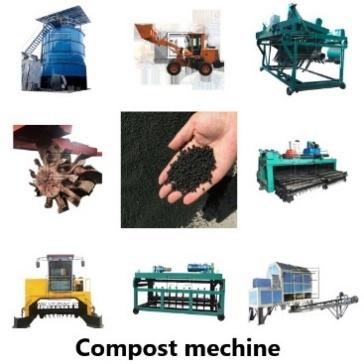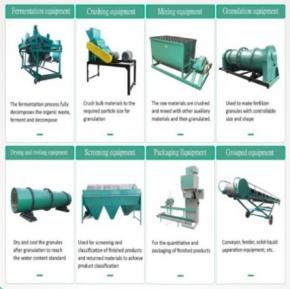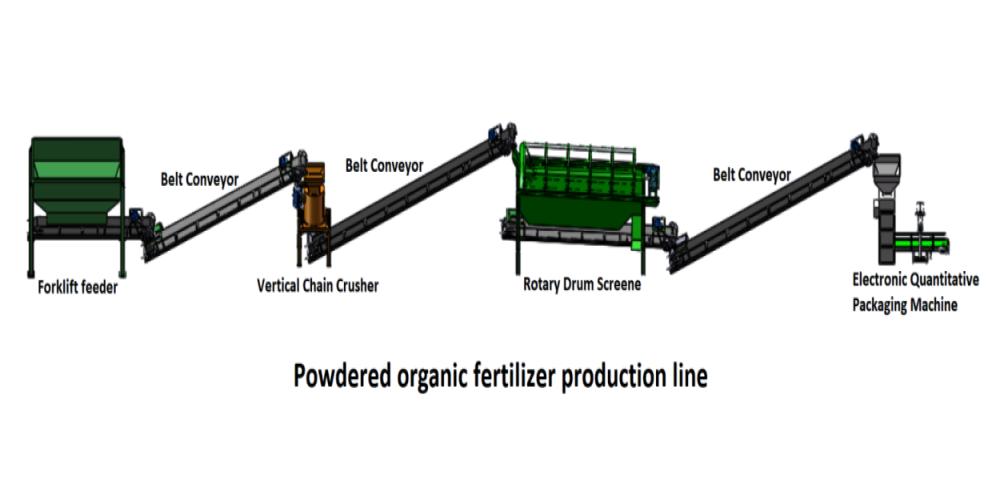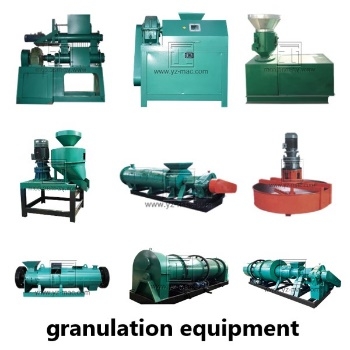Organic granular fertilizer making machine
An organic granular fertilizer making machine is a specialized equipment designed to process organic materials into granules for use as fertilizers. This machine plays a crucial role in sustainable agriculture by converting organic waste materials into valuable fertilizers that enhance soil fertility, promote plant growth, and reduce reliance on synthetic chemicals.
Benefits of an Organic Granular Fertilizer Making Machine:
Utilization of Organic Waste: An organic granular fertilizer making machine allows the conversion of organic waste materials, such as food waste, agricultural residues, and animal manure, into useful fertilizers. This reduces waste generation, promotes waste recycling, and contributes to a circular economy.
Enhanced Nutrient Availability: The granulation process breaks down organic materials into smaller particles, increasing the surface area and nutrient accessibility. The resulting granules provide a concentrated source of nutrients, making them readily available to plants and promoting healthy growth.
Controlled Release of Nutrients: Organic granular fertilizers release nutrients gradually over time, providing a sustained supply of essential elements to plants. This controlled release helps prevent nutrient leaching, reduces fertilizer runoff, and minimizes the risk of environmental pollution.
Soil Improvement: Organic granular fertilizers enrich the soil with organic matter, improving soil structure, moisture retention, and nutrient-holding capacity. This enhances soil fertility, promotes beneficial soil microorganisms, and supports long-term soil health.
Working Principle of an Organic Granular Fertilizer Making Machine:
The organic granular fertilizer making machine typically follows a process that involves several stages:
Material Preparation: Organic waste materials are collected and prepared for the granulation process. This may involve sorting, shredding, and mixing different organic components to achieve a balanced nutrient composition.
Mixing and Crushing: The prepared organic materials are thoroughly mixed to ensure a homogeneous mixture. Crushing or grinding may be employed to break down any large particles and create a finer texture.
Granulation: The mixed and crushed materials are fed into the granulation machine, which can be a rotary drum granulator or an extrusion granulator. The machine applies pressure, agitation, and binding agents (if necessary) to form the organic materials into granules of uniform size and shape.
Drying: The newly formed granules may contain excess moisture, which needs to be removed. Drying is typically done using a rotary dryer, allowing the granules to achieve the desired moisture content for storage and packaging.
Cooling and Screening: After drying, the granules are cooled to ambient temperature and screened to remove any oversized or irregular particles. This ensures a consistent size distribution and quality of the final organic granular fertilizer.
Applications of an Organic Granular Fertilizer Making Machine:
Agriculture and Crop Production: Organic granular fertilizers are widely used in conventional and organic farming practices. They provide essential nutrients to crops, promote healthy plant growth, improve soil fertility, and enhance crop yields and quality.
Horticulture and Gardening: The controlled-release nature of organic granular fertilizers makes them ideal for horticultural applications, including ornamental plants, fruits, vegetables, and landscaping projects. These fertilizers deliver nutrients gradually, supporting long-term plant health and minimizing fertilizer application frequency.
Sustainable Farming Systems: Organic granular fertilizers are a key component of sustainable farming systems, such as regenerative agriculture and permaculture. They contribute to soil health, minimize environmental impacts, and promote sustainable nutrient management practices.
Soil Remediation and Land Restoration: Organic granular fertilizers can be used in soil remediation and land restoration projects. They help rehabilitate degraded soils, improve soil structure, enhance nutrient levels, and promote the establishment of vegetation in disturbed areas.
An organic granular fertilizer making machine is a valuable tool for converting organic waste into nutrient-rich granules for sustainable agriculture. By utilizing organic waste materials, these machines contribute to waste reduction and recycling efforts while providing essential nutrients for plant growth. The controlled-release nature of organic granular fertilizers ensures optimal nutrient availability while minimizing environmental impacts.







